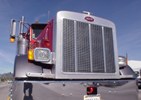
EU Study Confirms Truckers Cause Few Accidents
Accident reconstruction experts examined 624 injury accidents in seven European countries involving at least one heavy truck. Truckers caused 25 percent of the ones linked to human error, they concluded.
The most striking conclusion of a new study of heavy-truck injury accidents in Europe is that fatigue was a main cause in only 6 percent of the 624 accidents studied by the experts, and nearly 90 percent of the time when fatigue was a main cause, the accidents occurred on highways or interurban roads. Fatigue as an accident cause is a minor factor in cities, the study's authors report.
The report was the subject of a presentation given during the 12th World Conference on Transport Research in Lisbon, Portugal, July 12-15.
The European Truck Accident Causation study launched by the European Commission and the International Road Transport Union used accident reconstruction experts to examine accidents in seven European countries -- France, Germany, Hungary, Italy, the Netherlands, Slovenia, and Spain -- that involved at least one truck with a gross weight above 3.5 tons and resulted in at least one injury. The teams collected information, using a standardized questionnaire, about 3,000 parameters involving infrastructure, vehicles, and human factors and ultimately studied 624 accidents.
Human error by a trucker, car driver, pedestrian, etc. was a main cause of the accident 85.2 percent of the time. The trucker was the cause in 25 percent of those human error-caused accidents. The report breaks down the accidents according to their circumstances -- single vehicle, at intersection, with a vehicle leaving a parking space, etc. -- and found some interesting patterns.
- Five types accounted for 85.8 percent of the accidents: at intersection, in a queue of vehicles, due to a lane departure, during an overtaking maneuver, single-truck accident.
- Two times of day were identified as being crucial for accidents in which fatigue was the main cause. Most happened between 2 a.m. and 2:59 a.m., "probably the time when the driver's biorhythm is at a low point," the report states, and from 3 p.m. to 3:50 p.m., "when it is near the end of the working day."
- Fatigue was the main cause in only 6 percent of the accidents, but 37 percent of the accidents in which it was the main cause were fatality accidents.
- Factors involving a truck's load -- loss of load, overloaded, unbalanced load, insufficient safety measures with regard to the load -- were a main cause of only nine accidents, 1.4 percent of the total, but the study showed load factors can contribute to the severity of an accident.
Failure to adapt speed to the conditions, for truckers as well as other motorists, and failure to observe intersection rules were identified as frequent main causes. The report recommends effective signs and warnings, increased speeding enforcement, awareness campaigns about speeding and safe distances, adaptive cruise control, and even revising driving schools' material to help new drivers understand truck maneuvers.